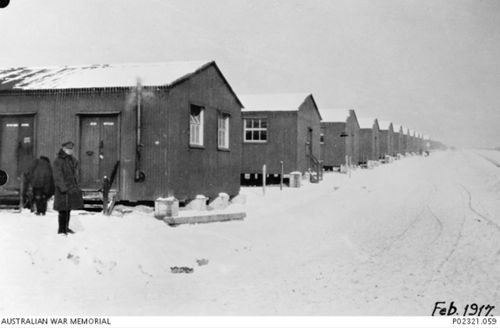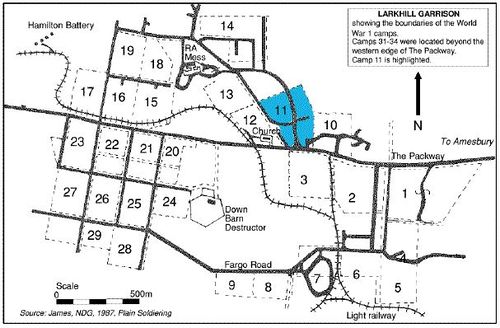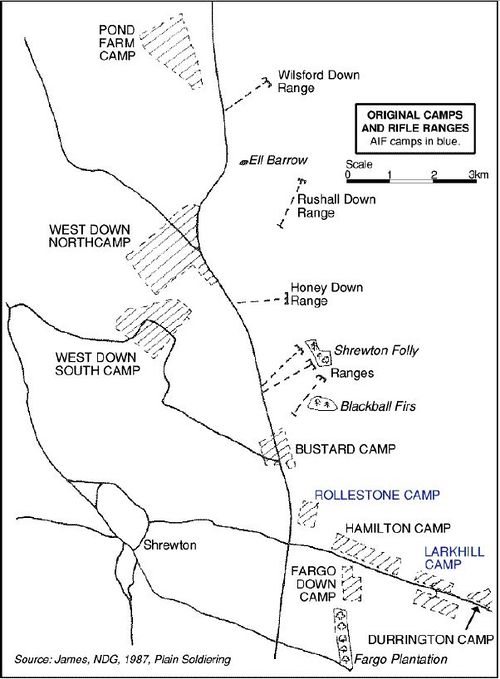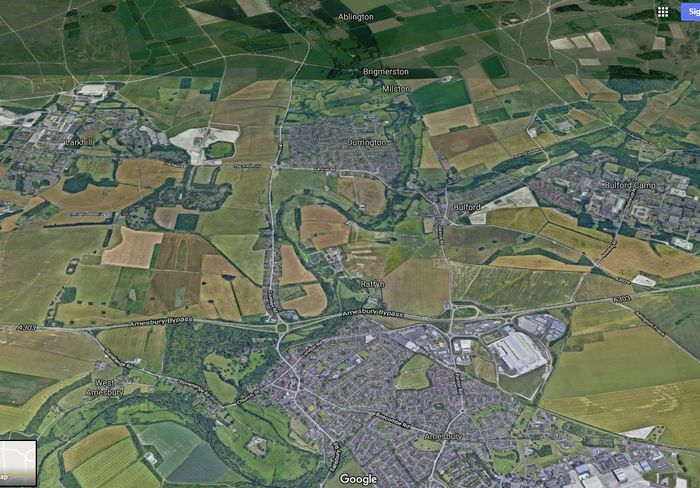Difference between revisions of "Larkhill"
From Our Contribution
(→Soldiers) |
(→Soldiers) |
||
| Line 31: | Line 31: | ||
''1917'' | ''1917'' | ||
| − | *[[William Atkins]] 11 Jan - 15 Jul 1917 | + | *[[William Atkins]] 11 Jan - 15 Jul 1917 - 11th Training Battalion |
*[[Henry Ogilvie Allom (Jnr)]] 18 Apr - 19 Aug 1917 - 11th Training Battalion | *[[Henry Ogilvie Allom (Jnr)]] 18 Apr - 19 Aug 1917 - 11th Training Battalion | ||
Revision as of 23:23, 16 January 2019
 Main Larkhill camp buildings | |
 Area shaded blue was used by 42nd Battalion 1st AIF | |
 Location of Rollestone, Fargo, Durrington and Larkhill camps. | |
Contents
Remarks
Prewar the site was used in the summer for tented camps, but was one of the first such sites to be built on when hostilities commenced. Larkhill Camp began on 12 August 1914, and completed in early 1915, was designated as the School of Instruction for Royal Horse and Field Artillery (Larkhill). Today Larkhill Camp is a School of Artillery for the British army.
The surrounding area supported thirty four individual infantry training camps, of a size suitable for a battalion at war strength, were added, and experienced by ‘units of practically every arm of the British Army.’ Up to 20,000 soldiers were in camp at times. Larkhill received large contingents of soldiers from Australia and Canada for training before being sent to France.
A Military Light Railway connected Larkhill to the London and South-western Railway spur, at Amesbury Station, crossed the Packway and terminated at Rolleston Camp, with a spur to the site of the original Fargo ammunition dump. The course of the light railway’s permanent way, though pulled up in 1935, can be traced by a line of apple trees that, it is said, have grown from the seeds of apples thrown out by troops on passing trains.
Soldiers
1917
- William Atkins 11 Jan - 15 Jul 1917 - 11th Training Battalion
- Henry Ogilvie Allom (Jnr) 18 Apr - 19 Aug 1917 - 11th Training Battalion
Notes
